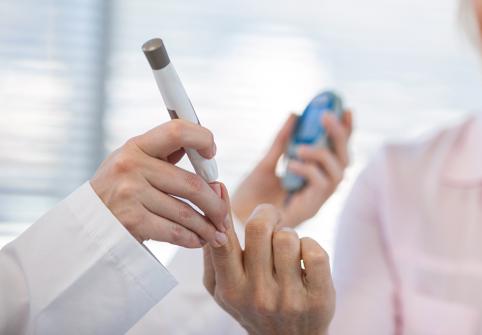Excellence The Role of Convalescent Plasma Therapy in Treating COVID-19 Patients
Dr. Nour Majbour, Research Associate at QBRI’s Neurological Disorders Research Center, and Dr. Omar El-Agnaf, Executive Director of QBRI, discuss how convalescent plasma can aid recovery from COVID-19
Convalescent plasma was once the traditional therapeutic approach for preventing and treating bacterial and viral infections, but the development of antibiotics and vaccines saw its role greatly diminishing.
Outbreaks of pandemics such as Spanish influenza in the early 1990s and more recently Ebola and the Middle East respiratory syndrome coronavirus restored convalescent plasma therapy to prominence, and COVID-19 has again brought its potential to the fore.
Convalescent plasma therapy involves the transfusion of plasma from patients who have overcome an infection to those who are still experiencing an active pathological infection. Such plasma is rich in antibodies that are able to neutralize the virus and thus co-support the patient’s immune response against the disease.
Study outcomes
Many research groups have explored the efficacy of convalescent plasma therapy in different viral infections and, while the studies reported different results, there was consensus that convalescent plasma transfusion improved survival rates among recipients compared to the control group.
Interestingly, a study in non-human primates showed that multiple transfusions of high-dose purified antibodies from convalescent plasma to macaque monkeys 48 hours post-infection provided complete protection against Ebola.
The use of convalescent plasma against another member of the corona family, MERS-CoV, the virus linked to Middle East respiratory syndrome, showed that patients significantly improved.
Collectively, these studies indicate the potential use of convalescent plasma as a therapeutic and preventive approach against currently incurable viral infections.
To determine whether convalescent plasma therapy is a cure or prophylaxis (treatment given or action taken to prevent disease), we first need to understand the definition of a cure. A cure is defined as a permanent solution or remedy that provides a full recovery from disease. A treatment, however, is defined as an improvement in a patient’s condition, enabling them to fight the disease.
A cure is viewed from the perspective of prevention, treatment and eradication while a treatment can be experimental or approved, where approved treatment is only part of the cure. In the history of infectious diseases, only smallpox and rinderpest have been successfully eradicated. In this context, convalescent plasma therapy is a treatment that could also be applied as a preventive measure.
In viral infections such as COVID-19, where specific anti-SARS-CoV-2 treatment is lacking and a vaccine is likely to be some time away from routine use, convalescent plasma therapy could help change the course of this pandemic.
However, one needs to address the challenges; firstly, convalescent plasma remains an empirical treatment, meaning that it is based on clinicians’ cumulative experience in handling the cases. Additionally, as an empirical treatment it also means that large-scale, randomized, and well-designed clinical trials are lacking.
Challenges
There is a legitimate concern as to how an increased need for convalescent plasma could be met during pandemics. A potential solution is the creation of infection-specific banks of convalescent plasma, where donors’ eligibility criteria are well-defined and standardized protocols for plasma collection and storage are applied.
Raising public awareness about plasma donation is important to support the creation of such banks in terms of recruiting donors, and attracting funds necessary to sustain this endeavor. Most protocols advocate that donation should be made within 28 days of symptom onset, and 14 days post-recovery. This time window ensures the absence of the virus and the presence of high titers (a laboratory test that measures the presence and amount of antibodies in blood) of antiviral antibodies.
In countries where the number of positive cases outweighs the recovered ones, securing a sufficient pool of convalescent plasma could be a difficult endeavor but one that could be overcome by isolation and purification of the antibodies from convalescent plasma, for manufacture and mass production. A benefit of this approach is that patients could be treated with a controlled dosage regimen.
The most critical step toward more widespread use is to conduct well designed randomized clinical trials where 1) the study groups are well selected; 2) disease stage is defined; 3) intervention protocols are well standardized; and 4) evaluation criteria of convalescent plasma administration between treatment group(s) compared to control group(s) is established prior to starting the study.
The first uncontrolled case study series conducted in Shenzhen Hospital, China, showed that five critically ill COVID-19 patients (age range 36-73; three male, two female) received convalescent plasma from five asymptomatic, SARS-CoV-2 negative donors (age range 18-60) and fully recovered. Despite the limitations in the study design, there was evidence to support the potential utility of convalescent plasma in treating COVID-19.
Earlier this year, the US Food and Drug Administration (FDA) approved the use of convalescent plasma as an emergency treatment for severely ill COVID-19 patients.
FDA permission is granted under certain conditions: 1) only severely ill or immediately life-threatening COVID-19 patients are eligible to receive the treatment; 2) convalescent plasma to be applied only as a treatment, not a prevention; 3) a licensed physician must request an official approval prior to the procedure; 4) approvals are on single-patient basis; and 5) donors’ eligibility should match the criteria set by the FDA.
Since then, many other studies and clinical trials have emerged. Table 1 summarizes active and recruiting interventional clinical trials of convalescent plasma therapy for COVID-19.
While the approval of convalescent plasma therapy by the FDA brings hope to many patients battling COVID-19, many questions are left unanswered. For example, what about the people at higher risk of severe COVID-19, like the elderly in nursing homes or healthcare workers?
Some argue that convalescent plasma transfusion is crucial to protect high-risk groups. Others have questioned the choice of the disease stage because, theoretically, receiving the therapy at the earliest stage is optimal, as the viral load is still low. For example, an individual who has overcome COVID-19 may wish for their convalescent plasma to be given to another family member who has an active infection, but should the individual then follow FDA guidelines and wait for the patient to deteriorate into a more severe stage of the disease, or act in what they perceive to be the patient’s best interests?
While we await specific treatments against COVID-19 to emerge, the coming few months will answer many questions about the use of convalescent plasma against COVID-19.


